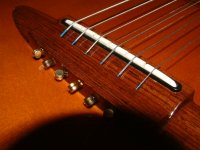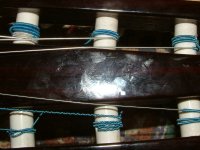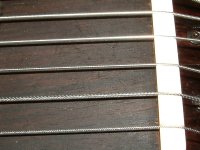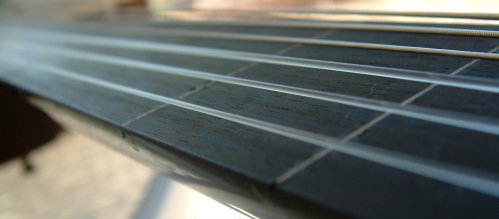
I read on unfretted.com that the choice of strings really makes a difference to the fit and handling of a fretless classical guitar. One guy recommend Thomastik-Infield KR116 strings, but mentioned the caveat that they were about three times the price of regular nylon strings, but in his opinion, they were worth it.
I tried purchasing some at Ed Roman’s (ok, he may or may not be an arsehole but he has an unbeatable range of stock) but they didn’t have them in stock and the price they quoted was ~$40! Ouch.
Fortunately, I discovered an online resource that had them for $19. Check out Elderly Instruments. I ordered a couple of sets and they arrived three days later. Thanks!

Ok, basically as soon as I opened the packet I could see why they cost more than regular ones. You can smell the quality. And it’s not just the smell. It’s the little things. For a start, they have the perfect length. You don’t need to trim them. All six are ball-terminated, and have blue fabric binding at each end. At the ball end, this is just sufficient to cover the length of the string that passes through the holes in the bridge. At the other end, it forms a nice grippy section of string that makes winding and securing the string to the tuning pegs a breeze.

The next thing I noticed is how thin the treble strings were. I thought I’d ordered a completely wrong set, but no, this is correct. They are just much thinner than regular nylon. The bass strings are “flat-wound” which much reduces the “rasp” of finger movement during slides. Surprisingly, the treble strings are “tape-wound” which actually makes the finger movement sound louder than regular nylon.
The sound of an open string is much brighter than regular nylon. I have to say that these strings most of all remind me of violin strings.

Recent Comments